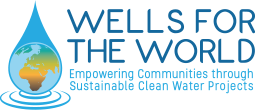Drilling Rig Purchased for Water Wells in Namuncha Kenya
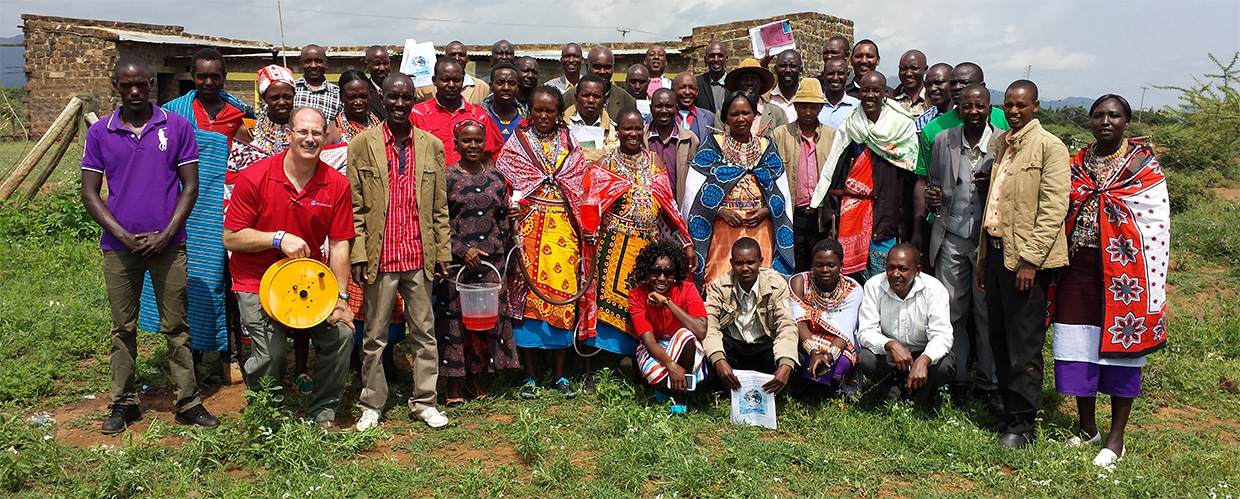
Wells for the World (WftW) has been working since June 4, 2016, to get a drilling rig into Kenya to begin drilling shallow (<250 feet or 76 meters) boreholes through the bedrock found in Kenya to install drinking water wells where the water table is less than 200 feet (61 meters). We have been collaborating with Water4Life Ministry, a water charity in San Diego, who approached us with the idea of purchasing the drilling rig and working together to install clean sustainable drinking water wells in Kenya, in areas suitable to the limits of the drilling rig we could afford to purchase. The parameters for the drilling rig was it had to cost less than $20,000 and be able to drill through the bedrock found in Kenya, while being simple enough to operate that we could train locals to become experts in a short period.
After much research, we purchased a Hydra-Fab Boremaster KD2600 trailer-mounted drilling rig, which is powered by a 26 horsepower (HP) diesel Kohler engine that powers the hydraulic systems of the drilling rig. The drilling rig has been modified so that it can drill through not only soil and soft rock (limestone, sandstone, etc., which is not really found in Kenya) using conventional wash or mud rotary drilling techniques, but can also operate a down the hole (DTH) pneumatic hammer drill system that allows the drilling rig to drill through the hard rock (basalts, rhomb porphyrites, trachytes, etc.) found in Kenya.
One of the deciding factors on purchasing the Boremaster KD2600 was that missionaries from America have used five Hydra-Fab drilling rigs, three smaller than ours and two the same size as ours, to drill over 400 wells in Kenya since 2001.
Unfortunately without sustainable maintenance and support strategies in place, drilling rigs will eventually become inoperable. This is one reason why we want to do everything as sustainably as possible and will work into the cost of their well’s money to be set aside for the maintenance and replacement of the drilling rig and other equipment, which will cost about $200 per well.
Our partners told us to have our rig modified to do DTH pneumatic hammer drilling, because of the hard rock in Kenya and it is more reliable than conventional mud rotary drilling techniques, which require what are called tri-cone bits (because they have three roller bits) that break away pieces of the rock as they are rotated, and the mud (simply muddy water) cools the bit as it is circulated through the drilling rods, through the tri-cone bit, and then up the boring (or borehole) to the ground surface where it flows into a settling basin, drops out the larger bits of rock and then is recirculated to continue the mud rotary process.
Whereas the DTH pneumatic hammer drilling technique uses a huge air compressor to operate a pneumatic hammer that is like a jackhammer on steroids! In our case, we will be drilling a 4-inch diameter (4” diameter) pilot borehole using the DTH pneumatic hammer drilling technique to the top of the water-bearing zone and then the 4’ diameter hole will be reamed (enlarged) to 6 inches in diameter using mud rotary drilling techniques. Where the mud rotary drilling technique is less efficient in drilling a borehole in hard rock, once the pilot hole is established the tri-cone bit will be able to break off the rock into the pilot hole to expand the diameter of the boring. Once the 6” diameter hole is established to the top of the water-bearing zone, then an 8” diameter tri-cone bit will be used to ream the boring to 8” in diameter. Then a 6-inch diameter PVC casing will be installed and cemented into place to seal the borehole above the water-bearing zone from any shallower impacts and the ground surface.
To operate the DTH hammer and blow the pulverized rock (sand size particles) out of the 4” diameter hole, 200 cubic feet per minute (cfm) of compressed air at, at least 100 pounds per square inch (psi), will be required. This requires a large industrial air compressor. Furthermore, because drilling will be done in remote areas and the type of electricity needed to operate an air compressor of that size would generally not be available, a gasoline or diesel-powered air compressor is needed. We were able to purchase just the diesel-powered air compressor we needed in March 2020, a Sullivan-Palatek CAT AIR 375 CFM, on an online auction for the incredible price of $5,600. This, of course, is a used compressor, but usually, these compressors sell for about $14,000 to $15,000, and a new one would cost about $52,000 or more, so we got a great deal.
Once the 6” diameter the surface casing has been installed, drilling will resume with the 4” diameter DTH hammer system until we reach the target completion depth based on the hydrogeologic study completed for the boring location (a requirement of the Kenyan Water Resources Authority [WRA]), or until we exhaust the capabilities of the drilling rig, which is somewhere between 250 feet (76 meters) or 300 feet (91 meters) deep.
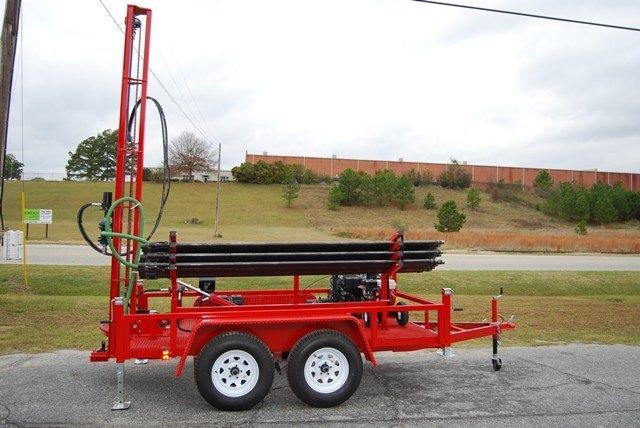
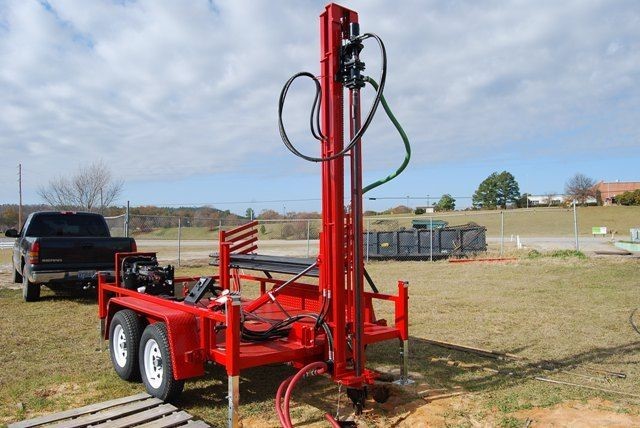
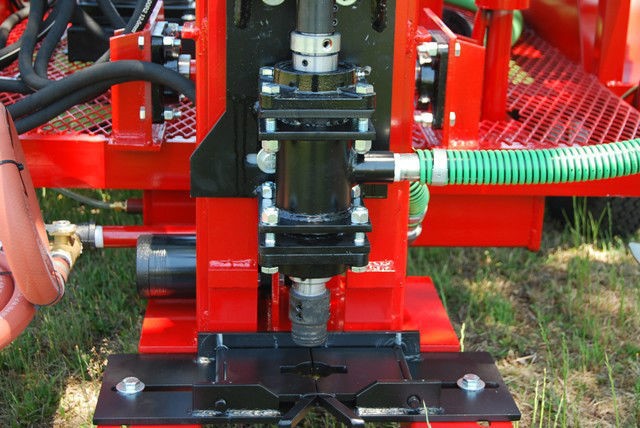
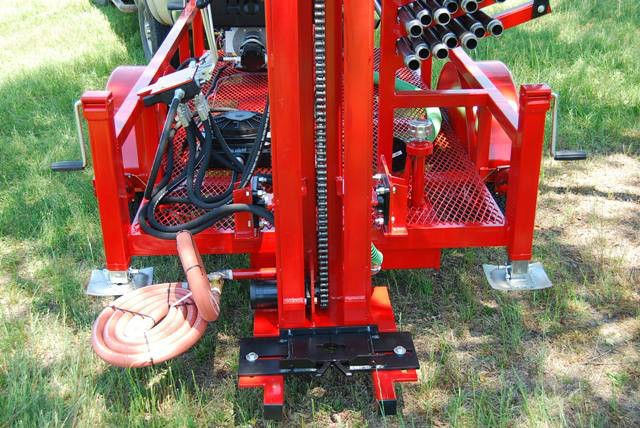
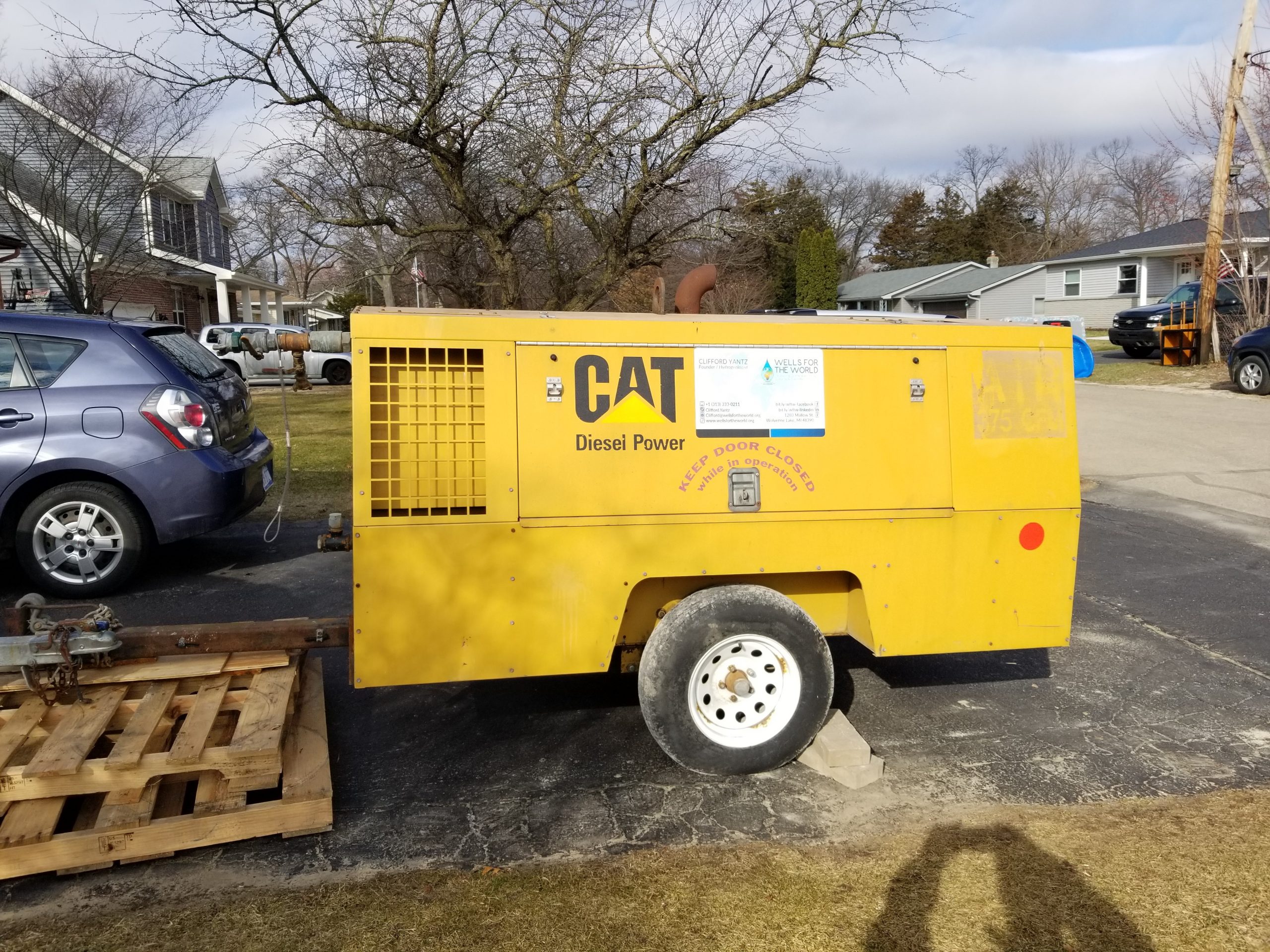
Once the 6” diameter the surface casing has been installed, drilling will resume with the 4” diameter DTH hammer system until we reach the target completion depth based on the hydrogeologic study completed for the boring location (a requirement of the Kenyan Water Resources Authority [WRA]), or until we exhaust the capabilities of the drilling rig, which is somewhere between 250 feet (76 meters) or 300 feet (91 meters) deep.
Once the 6” diameter casing has been installed it will take 375 cfm to blow the pulverized rock from the hole, which is just what the air compressor we purchased can do! However, sometimes the water within the borehole will preclude the cuttings from coming to the ground surface and in this case, air foam is needed to lift the cuttings to the ground surface. The air foam is a surfactant and will create bubbles (i.e., foam), much like soap bubbles, to lift the cuttings to the ground surface. We will have to use a food-grade surfactant that is biodegradable and water well approved by the National Sanitation Foundation (NSF). Food-grade surfactants are used in products we use every day like mayonnaise, salad dressings, and desserts.
Depending on the production, amount of water produced by the well, we may ream the borehole within the water-bearing zone to 6 inches in diameter (actually between 5.5 and 5 7/8 inches in diameter depending on the tricone bit utilized) to allow the use of a 4 to 5 inch outside diameter submersible (electric) pump in the well. However, if a hand pump or a low yield well pump will suffice, then the borehole will be left as a 4” diameter open borehole, which will work fine with these types of pumps.
At the ground surface, the well will be completed with a concrete pad and with whatever structure is needed for the pump. Some hand pumps require a specified concrete pillar around the well casing to allow the hand pump to be anchored to with a certain bolt pattern, etc. At this time, we will be either installing a hand pump or if electricity is readily available, an electrical submersible pump.
When we take on a water project, we try to build in sustainability. So, when we raise funds for the installation of a water well in Kenya with our drilling rig operation there, we won’t be operating the drilling rig, we will train the Kitilikini Namuncha Ewuaso Kedong Water Resources Users Association’s (KINEK WRUA’s) people, who we have been working with since 2014 so that they can operate the drilling rig.
By training locals to operate the drilling right, we’ll not only be creating jobs for 3 to 4 families per well but ensuring these wells operate for many years to come. At the same time, these trained individuals will be able to drill more wells for other communities at a third of the cost required to hire for-profit drillers. This approach ensures that the local communities in which we operate will be able to maintain their wells for years to come while Wells for the World continues our mission in other countries of Africa.
In addition, the various WRUAs throughout Kenya have the authority from WRA, who governs WRUAs, to request up to about $5 per person per year from each person benefiting from a water project to help sustain these water projects. This is amount is equivalent to selling about 5 bracelets or other small trinkets (pieces of jewelry, etc.) per person. Considering that ladies and girls (and young boys) walk on average 3.7 miles (6 kilometers) each day to get water around the world and up to 6 hours a day providing water for their families, which is often dirty, muddy water at that, if having a more reliable and closer source of water saves these ladies even only an hour a day, they would have some of this time to make these trinkets (or do other profitable work) to earn money to pay the fee. My Maasai friends tell me they can make a bracelet in about an hour, so this fee would only require five additional hours of work per year per person (about 25 hours for a family of 5, or 35 hours for a family of 7), but they would have an additional 277 to 287 hours a year to do other activities (this accounts for one day of rest per week, which some women and girls do not get). We think that $1 to $2 per person per year will be able to maintain our wells.
We cannot wait to ship the drilling rig to Kenya, which unfortunately has been delayed by the coronavirus pandemic, but as soon as the travel and other restrictions are removed, we will ship the drilling rig to Kenya, which will take about 3 or so weeks to organize after the restrictions are removed and about 8 weeks on sea and land to arrive in Namuncha, Kenya where the drilling rig will be kept by the KINEK WRUA. We still need to raise the funding for each of the wells we intend to install in Kenya and estimate that each will cost about $8,000 to install.
